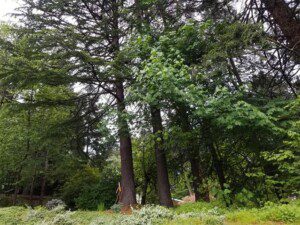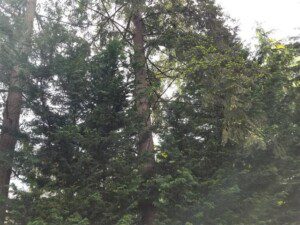
Depending on the species, large tree branches can stretch far beyond the trunk and extend next to and over a home’s roof. This can result in clogged gutters and downspouts, as well as debris accumulation on the roof itself. Debris on the roof and in the storm water system can result in water being directed towards the foundation, which can lead to foundation undermining, mold, decay, and water in the basement or crawlspace.
Branches overhanging the roof can also be a pathway for pests into the attic and interior of the home. Squirrels and raccoons can cross branches onto the roof, using any gap in the eaves to enter the attic space where they can cause damage to electrical wiring and insulation with their nesting. Wood destroying organisms like carpenter ants and wood boring beetles can also use branches as pathways to enter the home and cause significant damage.

Another hazard that large trees present can happen during windstorms or heavy rain when the soil is waterlogged and loose. During these conditions, weak or sick trees can be susceptible to splitting or falling over, which can cause severe damage to a home. Falling trees or tree limbs can also damage power lines and communication lines. Not only can falling trees or limbs cause damage to the home, they can also lead to serious injury to anyone nearby who could be struck by falling branches or the tree’s trunk.
While large trees can present hazards around a home, many can be made safer by regular maintenance. For most species, trees should be planted with the trunk no closer than 10 feet from the home and large trees should be regularly examined and serviced as necessary by a qualified arborist to help ensure your trees remain healthy and safe.
